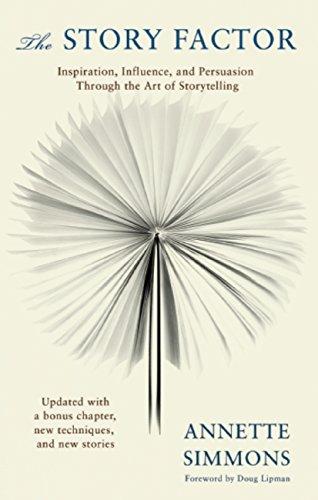The Story Factor Summary

3 min read ⌚
 Inspiration, Influence, and Persuasion Through the Art of Storytelling
Inspiration, Influence, and Persuasion Through the Art of Storytelling
We all love stories. “The Story Factor” uses this knowledge and teaches you a way you can use stories to influence and persuade people.
About Annette Simmons
 Annette Simmons is an author and the founder of a consulting company that helps organizations increase their profits through collaborative behavior.
Annette Simmons is an author and the founder of a consulting company that helps organizations increase their profits through collaborative behavior.
“The Story Factor Summary”
Our lives consist of stories. That is why we love them so much.
In fact, facts are just numbers and lifeless information, while stories connect them and create a meaning, which readers care for.
Knowing this, you can use stories to convey your opinions and influence people through telling the right stories.
Stories, unlike commercials and ads, which use a “push” strategy, use a “pull” strategy and lure the listener in. Hence, they are a circular model of influence.
Now, when you are choosing a story to tell, regardless of whether it is real or fictitious, you need to keep in mind to add emotional and details, to create an impact.
In reality, even if your story is pure fiction, it must contain an element of truth – some greater knowledge that will resonate with your listeners.
If you manage to engage listeners (and you will, if you add the proper amount of emotion), then they will become curious to hear more. When you manage to maintain their level of attention and create an emotional bond, then you will be able to influence them.
To tell better stories, you need to become a better communicator. The story itself is not the only thing that is important – the way you tell it is just as significant as well.
But why is persuasion easier when you tell stories?
Because, when preparing to listen to a story, people put their guard down. They become more relaxed, and hence they are more receptive.
In such a state, it is easier to touch their emotions and make them feel like a part of the story experience.
When people experience the story, they feel that they have gained some insight, just as they would from personal experience.
What this means is that you do not need to care only for the influence you will gain by telling the story, but about the value, you give to people through it as well.
Key Lessons from “The Story Factor”
1. Types of Stories
2. Situations When Stories are More Influential than Facts
3. The Dos and Don’ts of Storytelling
Types of Stories
-
- “Who I am stories” establish identity and trust
-
- “Why I am here stories” explain your purpose and objectives.
-
- “Vision stories” share your plans, hopes, and dreams.
-
- “Teaching stories” equip your listeners with ’how-to tools’
-
- “Values in action stories” make your meaning tangible
- “I know what you think stories” show understanding and empathy.
Situations When Stories are More Influential than Facts
-
- “Saying it without saying it.”
-
- “Stop asking me!”
-
- “One-D to three-D.”
-
- “Bear-Traps”
-
- “Giving a demo.”
-
- “Telling your superior he is wrong.”
-
- “Don’t tell me what to do.”
- “Reasons why.”
The Dos and Don’ts of Storytelling
-
- “Don’t act superior.”
-
- “Don’t bore your listeners.”
-
- “Don’t scare people or make them feel guilty.”
-
- “Do intrigue and captivate.”
-
- “Do connect at the level of humanity.”
- “Do leave them feeling hopeful.”
Like this summary? We’d Like to invite you to download our free 12 min app, for more amazing summaries and audiobooks.
“The Story Factor” Quotes
The best storytellers do not try to master story, but rather drink from the river of story and encourage others to drink. Share on X The psychological goal of influence is to connect your goals to your listener’s self-interest in some manner. Share on X Story is as close as you can get to taking someone else for a walk in your shoes. Share on X Creating a new spiral of connection is simply a function of paying attention - to ourselves, to each other and to our stories. Share on X Story gives people enough space to think for themselves. Share on X







